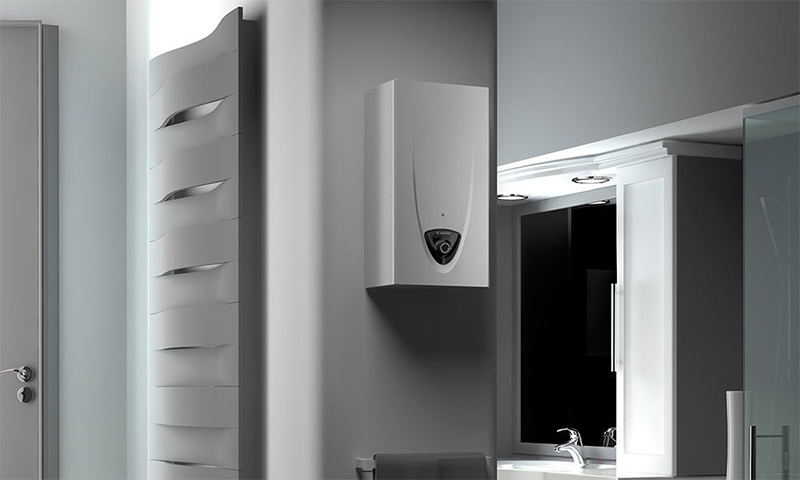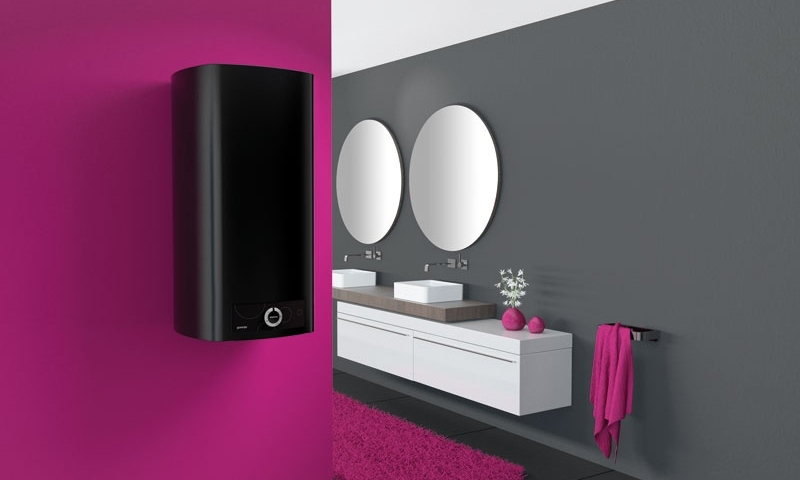The market economy provides for a variety of forms of ownership and the restriction of interference by officials in the economic activities of citizens. Based on this dogma, the owner of a private house has the right to decide for himself whether to use the services of the state for the purchase of the offered gas, electricity, water and heat, or independently extract, transport and use these benefits of nature.
The owner of a dwelling can legally install solar panels or a wind generator on the roof, drill a well to a certain depth, mount the pump, and then conduct electricity, cold water and heating. It will be necessary only to buy a store for indirect heating and with the help of a heating boiler to arrange a hot water system in the house. All you need to do in advance is to read the article, and then choose the right boiler.

Content:
The best manufacturers of indirect heating boilers - which company to choose
There are many indirect heating boilers on the market - they differ not only in technical characteristics, appearance and price, but also in the quality of performance. Without prior preparation, you can choose the right device at random. Since the drive is expensive, it will be wrong to take risks and make a purchase on a whim.
The following are companies that have earned the trust of their customers with high-quality equipment:
1. Gorenje
2. Drazice
3. Protherm
4. Baxi
5. Vaillant
The proposed material tells about the many nuances of choice. Knowing them, it will be easy to buy the desired model. But if the reader doesn’t have time at all, and you want to buy a drive that is inexpensive, at the same time high-quality and compatible with the heating boiler, we recommend you immediately get down to business and select a specific model in ranking of the best indirect heating boilers.
Types of indirect heating boilers
Classic models

Indirect heating boiler - cylindrical, cubic or rectangular-parallelepiped apparatus of accumulative type, with the help of which hot water is produced and supplied to the mixers of sanitary appliances. It is installed in canteens, bars, restaurants, as well as in houses with autonomous and / or centralized heating in order to create a DHW system.
The design and assembly of the unit include: a housing consisting of an external casing, insulation and an internal tank; coil heat exchanger, magnesium anode and recirculation pipe; inlet / outlet for cold / hot water and inlet / outlet for the circulating coolant; pump, thermometer, thermostat, drain valve, water filter and three-way valve; security group and control unit. The device is mounted vertically in the immediate vicinity of the boiler in a specially provided room: with a volume of ≤ 200 l to the main wall, with a capacity of 200 l to the floor.
A distinctive feature of the drive under consideration is the absence of a regular power source, the place of which is occupied by a boiler that generates energy for the heating system. In order to supply hot water to the sink, sink, bath and shower, the unit is “tied” by one closed loop to the GWS and the other to CO.
Part of the coolant, designed for radiators, is sent to the tank, passes down through the coil from top to bottom, returns to the boiler; cold water is supplied to the tank, it is heated up from the heat exchanger from bottom to top, moves to the mixers under pressure, and recycles back through the ring pipe.
Since the share of thermal energy intended for heating is consumed by the boiler, the single-circuit boiler is selected with a 30% power reserve, in addition, a 3-way valve is installed at the tank inlet, which by means of a relay adjusts the balance between the systems. Insulation is no less useful, due to the presence of which the water per day cools down only by 2 ... 4 ° С.
Advantages of classic indirect heating boilers:
- high performance - simultaneous feed to multiple parsing points;
- the possibility of recycling - after opening the tap instantly hot water flows;
- the presence of insulation - the liquid cools per day by no more than 4 ° C;
- indirect heating factor - low cost of water produced;
- simplicity of design - ease of use.
Disadvantages:
- heating duration with large tank dimensions;
- periodic heat removal from the heating system;
- low efficiency in the spring-fall season.
As you can see, the biggest plus of the classic models is the lack of consumption of electricity, gas or other fuel. A significant disadvantage is that at the end of the heating season this advantage is no longer valid.
Combined models

The combined boiler is an improved modification of the classical model, which, after turning off the heating, uses its own energy sources.
The design includes: additional heat exchanger under the circuit, for example, with a solar battery; flange for connection of “wet” or “dry” heating elements. These devices, depending on feasibility, work in conjunction with the heating boiler, and independently - TEN, in order to avoid premature wear, for the period of long idle time it is disconnected from the tank.
In addition to these devices, a heat pump and / or a centralized heating system can crash into the DHW network. To ensure safety, as in the case of the classic version, the following are installed: at the entrance to the accumulator - check and safety valves to prevent backflow and drain excess water; at the exit - the hydroaccumulator for regulation of the volume of the liquid changing under the influence of temperature.
Advantages of the combined indirect heating boilers:
- wide range of options for power supplies;
- availability of operation only 1 or 2 heat exchangers at once;
- high heat-saving characteristics;
- efficient hot water supply;
- simple periodic maintenance;
- comfort of use.
Disadvantages:
- relatively difficult installation of the system;
- high total cost.
Compared to the classic, the combined models are more practical, since they have the ability to connect the heating element and the second heating circuit. True, for additional sources of energy you need to pay.
Indirect heating boiler selection options
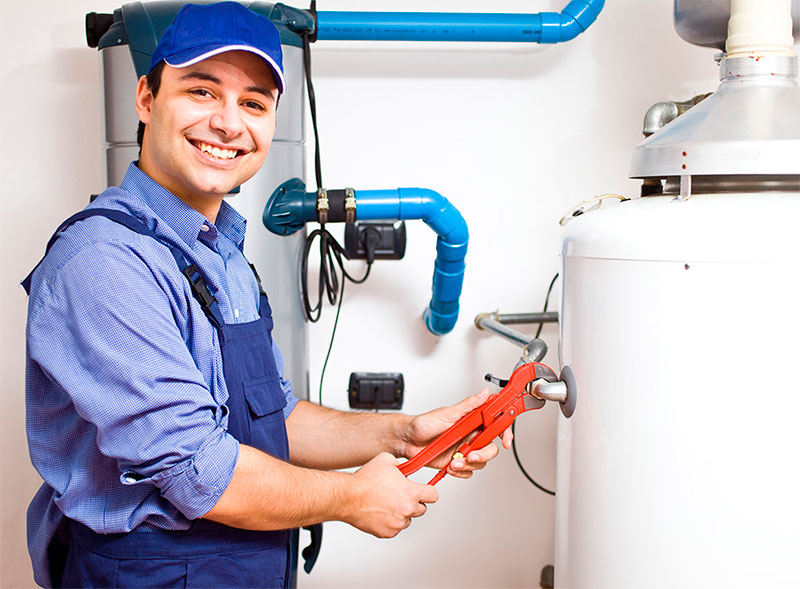
Most indirect heating units are installed in homes with an autonomous heating system — if that is not the case, there is no point in buying a storage unit, since it will not work. In addition, the device costs a lot, so it is advisable to purchase it for at least 2 parsing points - for one, an electric instantaneous water heater is better suited.
Before going to the store, based on the consumption mode, as well as the number of mixers and users, the optimum tank volume is determined: for 1 person, a capacity of 80 liters will suffice; for 2 or 3 people - 80 ... 120 l; for 4 or 5 family members - 120 ... 200 l; for 6 ... 8 inhabitants - 200 ... 300 liters.
For a more accurate calculation, water consumption for household needs is taken into account: bath and shower - 150 and 80 liters; hygiene procedures - 15 liters; washing dishes - 30 l; cooking - 15 liters.
1. When choosing, in addition to the volume of the tank, other technical characteristics are taken into account, most of which are interconnected: heat exchanger capacity (kW), capacity (l / min), heating time (h), maximum hot water temperature (° С), working pressure (bar).
In determining the optimal performance, the boiler power and the amount of energy required for the effective functioning of the heating system are necessarily taken into account.
2. Boilers are mostly compatible with any boilers, regardless of the type of fuel on which they operate. But there are exceptions - in such cases, a special control unit is additionally installed.
3. Attention is subject to the area of the heat exchanger, on which, together with the volume of the tank and power, the heating time depends. Naturally, the larger the coil (or tank), the faster the water reaches the desired temperature.
4. The internal anticorrosion coating of the steel tank significantly affects the quality of the liquid and the durability of the device. The most popular is enamel - it is inexpensive, at the same time and not very reliable, because with a large temperature difference is covered with microcracks. The next rated is glass porcelain, then titanium. The most practical capacity is created from a stainless steel.
5. An additional and equally effective protection of the tank from the inside is the magnesium anode, which, having a low electrochemical potential, “pulls” the oxidation of the steel walls onto itself. In the course of his work, he wears out and needs to be replaced about once every 2 years.
6. The coil is made of steel, copper and brass. The latter two materials are more preferable - they cost more, but they are easier to clean and do not rust.
7. The efficiency of the unit largely depends on the insulation - it is located in the cavity between the housing and the internal tank and performs heat-saving functions. In its quality are used foam rubber, mineral wool, foam, polyurethane foam.
The first material is the cheapest and least practical, the last one is expensive, but the water in the tank with it cools down by no more than 2 ° С per day.
8. Under the units of such a plan, especially since they are “attached” to the heating boiler, it is necessary to think of a “seat”.
The drive, the volume of which is 200 liters or less, is attached to the supporting wall, and, preferably, near the power source. When the capacity of the device is from 200 liters, the installation is carried out on the floor according to the same principle - in close proximity to the boiler or even under it.
Modern indirect boilers are the combined devices to which additional sources of energy are connected. As a result, the DHW operates not only in the heating season, but 12 months a year. When choosing, on the basis of plans for the complex heating of water, the presence of a second coil heat exchanger in the flange design under the heating element is checked.
What indirect heating boiler to choose
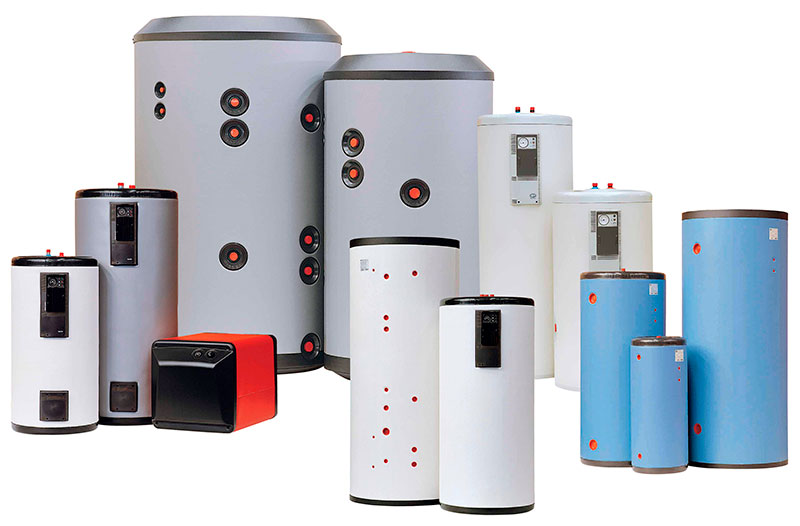
An indirect type of heating unit can be installed in almost any building to create or upgrade a DHW system. But only under the condition that the interior of the room is heated. In reality, the boiler is most sought after by the owners of houses in which different numbers of people live and a different number of plumbing fixtures are installed.
Since the classic models are designed only for the heating season, and cottages and mansions are mainly used year-round, preference is given to the combined versions, which can additionally work, at least, from heating elements.
Based on the above parameters, we note:
1. For 1 person, a combined wall unit with a volume of 80 liters and a small capacity will suffice. This amount of water, given that it will be diluted, is enough to take a bath - the most consumable sanitary device. The remaining parameters are selected individually depending on the appropriateness, preferences and capabilities.
2. For the most typical family, consisting of 2 adults and 2 children, suitable tank capacity of 150 liters and high performance.For the summer season it is desirable to install a powerful heater from 30 kW. For dining rooms, restaurants and bars, where hot water is consumed in large quantities, it will be just the floor device with a volume of 500 ... 1000 liters.
How much does an indirect heating boiler cost?
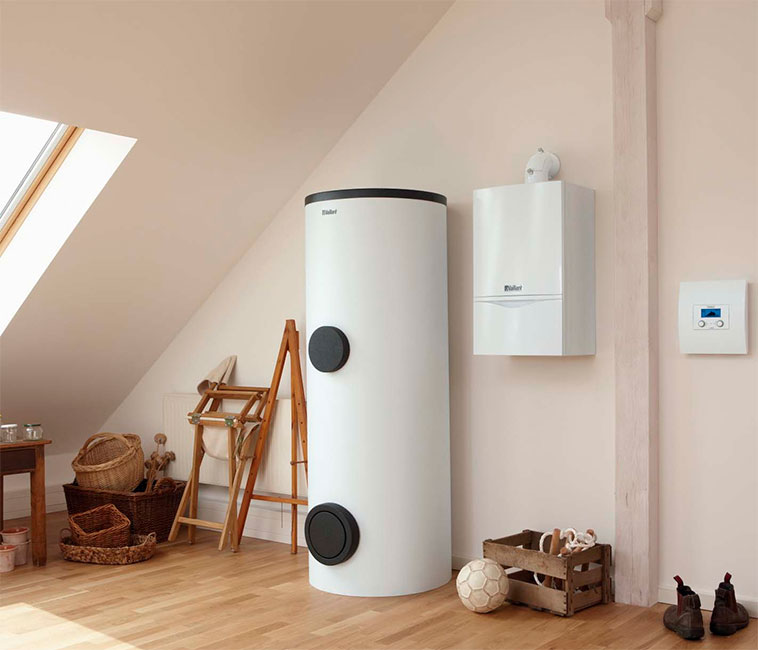
The cost of boilers depends on many factors, the main among which are: technical characteristics, quality of used materials, place of assembly, brand quotation, marketing policy:
1. For 1 person: Gorenje GBK 80 RNB6 / LNB6 - 80 l, 6 bar, enameled coating of the tank, wall mounting, magnesium anode, 2 additional “dry” heating elements, heat exchanger area 0.7 m2. 18.9 ... 27.3 thousand rubles.
2. For 2 or 3 people: Baxi Premier plus 100 - 100 l, 30 kW, 12.3 l / min, 7 bar, stainless steel tank, 2 heat exchangers, built-in thermostat, universal installation, the ability to install heating elements. 34.9 ... 47.5 thousand rubles.
3. For 4 or 5 family members: Drazice OKC 200 NTRR - 200 l, 48 kW, 6 atm, 2 coils, magnesium anode, enameled tank, polyurethane insulation, possibility of additional connection to a gas or diesel boiler. 30.7 ... 36.7 thousand rubles.
4. For 6, 7, 8 inhabitants: Protherm FS B300S - 295 l, 46 kW, 46.2 l / min, 10 bar, 2 heat exchangers, titanium anode, polyurethane insulation, antibacterial protection, the ability to connect the heater. 49.2 ... 63.8 thousand rubles.
It will be interesting to friends too


